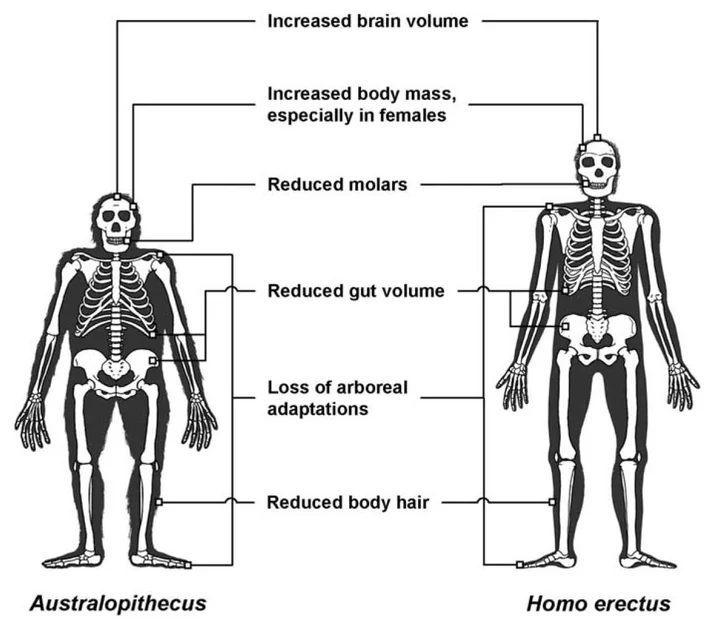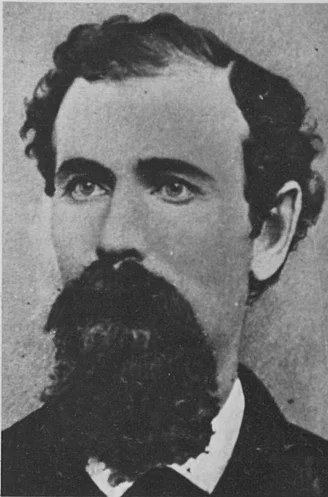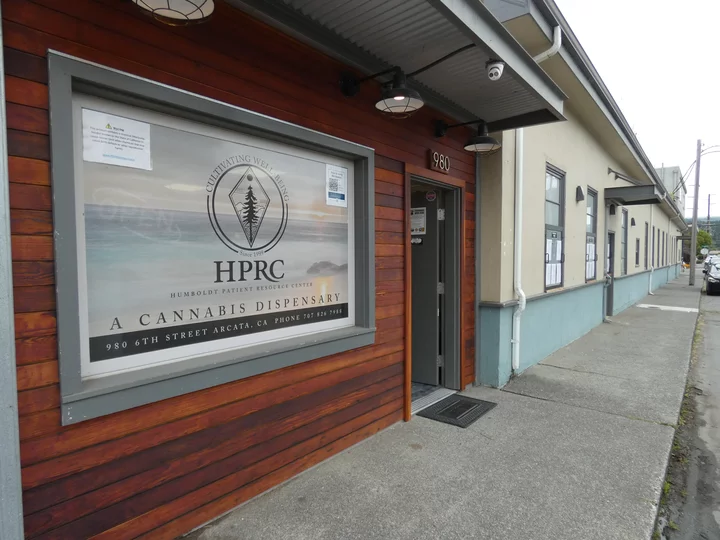GROWING OLD UNGRACEFULLY: Hunters, Gatherers and Cooking
Barry Evans / Sunday, June 4, 2023 @ 7 a.m. / Growing Old Ungracefully
Last week, after I claimed that the invention of the basket was a necessary precursor to cooking, several of you objected, saying fires + cooking would have occurred first, and were, anyway, much more important than efficient foraging. After going back and reading what I’d previously written, some years ago, about the importance of cooking, I’m back to say, (gasp) I was probably wrong: cooking led to baskets, not the other way round.
The problem is that, when we’re talking about what happened with our forebears two million years ago, we have tons of speculation and very little actual data to go on.
Data
Between 2.0 and 1.7 million years ago, Homo skeletons changed dramatically. Our two-million-year-old Australopithecus ancestors were apes: they had short stature with a slouching gait, low brows, massive jaws and mouths housing huge teeth, a small (chimpanzee-sized, 37 cubic inches) brain, flared ribs around a big belly and limbs adapted to tree climbing. All the hallmarks, in other words, of a bipedal ape.
Just 300,00 years/20,000 generations later, they had evolved into essentially modern anatomy, Homo erectus. Put one of them into a suit, give them a shave and haircut, and you might be fooled into thinking they were us. They still had a more compact brain than ours (53 vs. 73 cubic inches*), but, compared to Australopithecus, they had much smaller teeth, jaws, mouths, stomachs and colons. Also, their body weight almost doubled, from 75 to 135 pounds.
* Someone figured out that’s equivalent to each generation having 125,000 more neurons than their parents.
Cooking probably got us from Australopithecus (2.0 million years ago) to Homo erectus (1.7 million years ago). (Wrangham-Carmody, used with permission)
Speculation
The catalyst for these dramatic changes was cooking. Cooked meat is essentially pre-digested meat, which, from the POV of our stomach enzymes, is far easier than raw meat to convert into energy; it takes much more time and energy to digest cold, hard, tough food than cooked food.
(Great apes eat twice as much as we do because 30% of their food is indigestible fiber that gets excreted. They spend the better part of their waking lives chewing, while we devote about an hour a day to eating.) This is speculation, because we don’t have archeological evidence that humans controlled fire 1.9 million years ago—the oldest accepted evidence for hearths is only about 250,000 years old. (Neither, of course, do we have millions of years-old baskets—the oldest has been dated to about 10,000 years ago.)
Now comes the interesting part. If you’ve hunted down an animal and you want to cook it, you have to schlep it back to the tribe, because that’s where the fire is. Meaning you have to learn to share it with the whole gang. And if you’re sharing meat, you’re probably a dude (males being anatomically stronger and faster than females), leaving the womenfolk free to go out gathering berries and roots. (There’s limited evidence that foraging was more efficient, in terms of net calories per day, than hunting.) And, as I discussed last week, the key to efficient foraging is a basket to carry home the (literal) fruits of your labor.
(If all this piques your interest, do read Catching Fire: How Cooking Made us Human by Richard Wrangham, professor of biological anthropology at Harvard. It’s in the County library.)
Maybe it’s chicken and egg, but I’m backing off the “baskets first-cooking later” scenario. Something happened to our African forebears two million years ago, and, absent aliens, it probably all started when some clumsy guy — I bet it was a dude — accidentally dropped a chunk of raw meat into the fire: the world’s first BBQ.
BOOKED
Yesterday: 2 felonies, 2 misdemeanors, 0 infractions
JUDGED
Humboldt County Superior Court Calendar: Today
CHP REPORTS
Hookton Rd / Eel River Dr (HM office): Roadway Flooding
ELSEWHERE
RHBB: John Oliver Takes KZYX for a Spin—Bidet Included
RHBB: Humboldt County Civil Grand Jury Has A Vacant Position
RHBB: Fortuna Public Library Undergoes Accessibility Renovations, Moves to Temporary Location
RHBB: Crash Flips Jeep Onto Its Side at E and Henderson in Eureka
HUMBOLDT TEA TIME: Old Town Wild Man Barry Evans Has a New Book Out, and it’s All About Humboldt
LoCO Staff / Saturday, June 3, 2023 @ 3 p.m. / People of Humboldt
Today for tea time: None other that Humboldt gadabout Barry Evans — writer, engineer, science enthusiast and Xtreme Brit. Barry has a new book out, and he’s eager to tea down for promotional purposes.
That book is the sequel to the popular Humbook, and it’s called Humbook 2! It’s chock-full of all sorts of weird bite-sized stories about Humboldt history, geography, biology and more, and it is a nice thing to have around to awe out-of-towners with.
The Outpost’s John Kennedy O’Connor drags all sorts of stuff out of Barry, including how he got into the business of scribbling, and a retelling of the time he almost burned down the King Range.
Thai tea today. Spoiler: Barry likes it, O’Connor does not.
You knew this was coming, and here it is: Today’s tea time snack is Crustless Cucumber Sandwiches. Once you assemble that sucker and get every bit of crust removed, press play on the video above and join us! Then come back tomorrow morning for Barry’s regular Sunday Outpost column!
THE ECONEWS REPORT:A Trip Back in Time to the Ghost Forest, With Author and Redwood Summer Veteran Greg King
The EcoNews Report / Saturday, June 3, 2023 @ 10 a.m. / Environment
It would seem unbelievable if it weren’t true. EarthFirst!, bombs, crooked cops, racists. This is the story of the redwoods, or rather, the fight to protect the redwoods, as told by one of the partisans of this fight, Greg King. King’s new book, The Ghost Forest: Racists, Radicals and Real Estate in the California Redwoods is part memoir of his own time as fiery young radical in the Redwood Wars and part of history of the economic and social history that set the stage for the Redwood Wars.
Greg joins the EcoNews to talk about his new book. Join us.
Read an excerpt of The Ghost Forest here. The Ghost Forest will be released on June 6th, preorder a copy today.
AUDIO:
“The EcoNews Report,” June 3, 2023.
[Sorry, no transcript this week.]
HUMBOLDT HISTORY: Back Before They Knew Any Better, Some Early White Settlers Thought They Could Build With Brick. So Some Became Brick-Makers
Glen Nash / Saturday, June 3, 2023 @ 7:15 a.m. / History
The manufacturing of bricks was an established industry in Humboldt County from the year 1855, as a growing need for them developed to supply the construction trade.
It was expensive to order the heavy product shipped to the North Coast, so local means of production was sought. It was found that clay of good quality was in abundance throughout Humboldt County.
The brick made in Humboldt County was the common red brick. It was used in the building of walls, fireplaces and chimneys. The principal material used in the making of brick is the clay. It contains sand and small quantities of iron, magnesia, lime, potash and other minerals. Each of these substances has an effect upon the color, hardness and durability of the finished brick.
In the early days, Humboldt bricks were made by hand; the clay was mixed with water in a pug mill, sometimes with a horse and a turnstile to operate it. The clay was then placed in molds, pressed and removed from the molds and laid in the sun to dry or placed under cover for a few days. They were then stacked in a kiln and fired.
As soon as machinery could be brought into Humboldt County nearly all bricks were made much easier and much faster using the stiff mud process. In this process, the clay was thoroughly ground and water added to make a stiff mud. After the mud was mixed in a pug mill, it was placed in a machine having a die or opening the exact size of the brick.
This machine, with a large screw, forced a continuous bar of clay through the die. As it emerged it was cut into bricks by a series of steel wires like a cheese cutter, slicing about 12 bricks at a time.
The soft bricks were placed on a pallet holding about 84 bricks each; they were then put in a drying shed with open sides and dried for a considerable length of time, sometimes for thirty days. Next, they were moved and stacked in the kiln, which is like a large oven. The bricks were spaced to allow the heat to circulate around them. These kilns held from 60,000 bricks, or more, at one time, depending on the size of the kiln. A slow heat was applied using wood for about three or four days. Then the oil burners were turned on. About 12 burners, spaced around the bottom of the kiln, brought the temperature to 1900 degrees and it was held at that level for three days, or when the operator determined the firing was complete. The burners were shut off and the kiln allowed to cool slowly.
When the bricks cooled they were removed from the kiln and graded according to color, hardness, straightness and quality and stacked on pallets. The bricks that were too close to the burners were called clinkers and deemed not suitable for most work. The bulk of the bricks were ideal but some, too far from the heat, tended to he a little softer. It was not until 1891 that brickyards introduced facilities for making drain tile. The drain tiles were made in much the same manner except for a different die. The clay used was the same. The tiles were made in various sizes from three-inch in diameter to 10 inches, and were all 12 inches in length.
There are other kinds of brick which had to be shipped into Humboldt such as face brick, pressed brick, fire brick, glazed brick, paving brick and hollow brick, to name a few.
The size of most common brick is 2 1/4 inches thick, 3 3/4 inches wide, and 8 inches long; this size varies in different locations. The weight of a common brick is about 4 1/2 pounds. During the period of time from 1870 to 1930, the local bricks were used in many buildings, such as the Carson building which housed the Ingomar Theater, the Eagles building on Fifth Street, the Carnegie Library, the old county jail and many other buildings in lower downtown which are still standing. Brick was used for foundations in many of the old Victorian homes.
In the years 1880 to 1900, there were six major producing brickyards in Humboldt County. In 1891 the first tile machine came to the area for a brickyard near Rohnerville, west of the railroad. This yard was owned by James D. Thompson, who later sold out and moved his operations. He purchased the brickyard on the Eureka Slough, at the north end of John Hill Road, from John E. Hill who started the yard. Hill was the father of Arthur W. Hill, former district attorney for Humboldt County, and grandfather of Arthur W. Hill, attorney.
Sometime during the early 1900s, James D. Thompson leased the brickyard to John A. Porter, and he changed the name to Eureka Brick and Tile Co. During this time Porter had a man working for him at the brickyard called, “Andy Bear.” The reason for the name? He had a pet bear chained at the brickyard. Later James Thompson again took over the operation.
In 1890, John B. Hill, a cousin of the former Hill, purchased ten acres at 1900 Harrison Avenue, just north of the county hospital, and built a brickyard which he operated for two years with his brother, William. He operated it by himself for twelve more years. In 1904, he closed the brickyard and started raising strawberries on the land. He had built a fine home at 1904 Harrison Avenue. Here, he raised seven children, among them a daughter, Edith, who married Peter McRae, a grocer. A son, Wesley, was at the Eureka Post Office for years, and a son. Warren, was with the Western States Gas and Electric Co. when he was accidentally electrocuted. Another son, Chester, was a shingle weaver in Eureka.
Getting back to brickyards, there was one in Arcata, one in Fields Landing and one just south of Harris Street between Williams and D streets in Eureka. This yard was owned and operated by Jesse N. Lentell, a civil engineer. He served as Eureka city engineer for eleven years and lived near the brickyard at 3120 D Street. The brickyard operated from 1887 to 1915. Elzie Daily located a brickyard in Arcata, on property north of 14th Street and between L and M streets. Block No. 292. This yard furnished bricks for many Arcata buildings including the John Hill built this home at 1904 Harrison Ave. The brickyard was Jacoby Building. The building, now owned by Brizard’s, stands just south of the plaza. (This information was published in the Arcata Union in 1956, and was given to me by Mrs. Martha Roscoe.)
James D. Thompson operated his brick and tile yard on the Eureka Slough, employing about ten men most of the time, and turned out many thousands of bricks and tile until the 1930s. After this period, lots of other material came on the market and the railroad and trucks hauled bricks in from the south. This was the last brickyard left in Humboldt County.
In 1946, Thompson met a young man and sold him the brickyard, staying with him for a few months to teach him the trade. This young man was Henry Hindley. Hindley and his wife, Lorene, continued to operate the business until 1956. After the earthquake of 1954, which damaged m.any chimneys, there was a demand for a good many common bricks. Together, they fired the last kilns of bricks to be fired in Humboldt County, turning out over 120,000, which they quickly sold. Their brick machinery was very old and obsolete and there was too much outside competition. So, they decided to close shop and tear down the plant. They still live on the original site in their nice brick home built from their own bricks.
During the year 1884, when it was decided to build a new Humboldt County courthouse, a brick mason by the name of John Depew, who lived at 1217 Bay Street, could see that many bricks would be needed in this construction. So, he located some suitable clay for brick. The site was at the south end of the present-day Cooper Gulch near 14th Street. Here he built a brickyard and kiln, dug a well for water and turned out many thousands of bricks used in the construction of the new courthouse.
The first bricks were laid there on May 29, 1885, and the cornerstone was laid by members of Humboldt Lodge #79 F. & A.M. on July 4, 1885, along with a very large celebration. In 1954, an earthquake damaged the old courthouse beyond repair, and after seventy years of service it was demolished. Many thousands of the bricks were cleaned and salvaged and have since been used for building faces, fireplaces and other projects in the Eureka area. Thousands of these old bricks were not usable so were hauled and dumped as fill in the same location where they were made in the gulch near 14th Street.
Some idea of the size of the brick industry in Humboldt County is shown in production figures for the years 1890-1893. During this period, the brickyards employed 42 men and produced approximately 4,480,000 bricks and 17,000 yards of drain tile. This material was sold for use in the county.
OBITUARY: Sharon (Sager) Hopkins, 1942-2023
LoCO Staff / Saturday, June 3, 2023 @ 6:56 a.m. / Obits
Sharon (Sager) Hopkins, 81, passed away peacefully March 2 in Salem, Oregon. She was preceded in death by husband, Meriel Hopkins. One of six children of John and Imogene Sager, Sharon was born January 9, 1942 in Eureka. While living in Miranda, her favorite schoolteacher was Mr. Mario Machi, author of Under the Rising Sun, which included his experience in the Bataan Death March. She was a class officer in high school.
Sharon was a housewife for 20 years, an accomplished cook and seamstress. She sewed clothing for herself and her children, including fun Halloween costumes. Sharon was a league bowler whose trophies were always on display in her home.
She later worked as a waitress, most notably at the Angelina Inn in Fernbridge, until retirement. She and husband “Hoppy” loved to hunt. They had his and her mounted bear skins where they lived in “the cabin” on the Van Duzen River in Carlotta.
A longtime member of the New Horizon Church in Salem, she especially enjoyed being part of the Lady’s Group. “She was such a special lady to us, and her cornbread pudding was always a big hit at potlucks.”
Sharon is survived by brothers Harry, Gary and David Sager, daughter Cheri Spring, son Larry Ridenour, three grandchildren and one great grandchild.
A graveside service is scheduled at Ocean View Cemetery in Eureka on June 16 at 11 a.m.
###
The obituary above was submitted on behalf of Sharon Hopkins’ loved ones. The Lost Coast Outpost runs obituaries of Humboldt County residents at no charge. See guidelines here. Email news@lostcoastoutpost.com.
HUMBOLDT TODAY with John Kennedy O’Connor | June 2, 2023
LoCO Staff / Friday, June 2, 2023 @ 4:38 p.m. / Humboldt Today
Catch up quick with the LoCO’s local newscast! Press play above and check below for today’s pressing poll question.
FURTHER READING:
- CONVERSATIONS: Get Your Lightsabers Ready, Star Wars Nerds! The Forest Moon Festival is Coming to the Region This Weekend and Film Commissioner Cassandra Hesseltine is Here to Tell Us All About it
- Bidding on Del Norte’s Tiny House Starts Today; Studen-Led Tours Will Be Held This Weekend
- Del Norte’s Smoke-Free Multi-Unit Housing Ordinance Takes Effect in July
Local Weed Dispensary Humboldt Patient Resource Center Closes Suddenly Following Owner’s Death
LoCO Staff / Friday, June 2, 2023 @ 4:03 p.m. / Business , Cannabis
The HPRC dispensary in Arcata. | Image via company website.
###
The Humboldt Patient Resource Center, a local cannabis dispensary that had been in business for nearly a quarter of a century (mostly in Arcata, briefly in Eureka), posted the following statement on social media on Thursday:
It is with profound sadness that we announce the closure of Humboldt Patient Resource Center Inc. on June 1st, 2023. The untimely and unexpected passing of the owner has presented us with unavoidable challenges concerning our state cannabis license.
For an incredible span of 24 years, we have had the privilege of serving our cherished customers and the community at large. We have strived tirelessly to avoid this unfortunate closure, endeavoring to continue providing the same level of service that has defined our establishment for so many years.
We would like to extend our heartfelt appreciation to each and every individual who has been part of the Humboldt Patient Resource Center family. Your unwavering love and support have been the cornerstone of our success. We are profoundly grateful for the trust you have placed in us and the relationships we have cultivated along the way.
While we navigate this difficult period, we ask for your understanding and patience. Our team is dedicated to working diligently to address the challenges we face and explore all possible avenues to continue serving our community. Your support and encouragement during this time mean the world to us.
As we reflect on the memories we have shared and the connections we have forged, we express our deepest gratitude for your loyalty. It is through your support that we have been able to contribute to the well-being of our community for so many years.
Thank you for being an integral part of the Humboldt Patient Resource Center journey. We value your continued support, and though our paths may temporarily diverge, we hope to remain connected in spirit.
Together, we have created something truly special, and for that, we are eternally grateful.
Wishing you all the best, until our paths cross again in the future.
Thank you so much again,
From The HPRC Staff of Cannabis Consultants, Garden & Back of House





